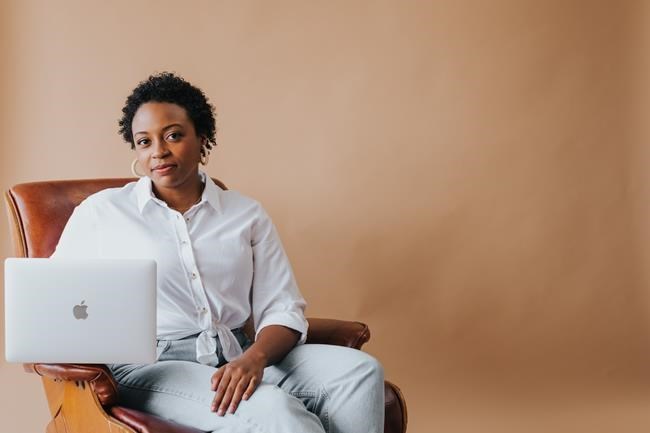TORONTO — When Jasmine Williams first went freelance a few years ago, one of her biggest challenges was dealing with the inconsistency of her income.
Williams, a 28-year-old content marketing consultant in Toronto, went from having a paycheque every two weeks to getting paid irregularly, sometimes at the start of a project and sometimes at the end.
“When I was just starting out, I didn’t have bigger contracts. I was maybe doing an article here or there. Not knowing when you’re getting paid can make it really tricky to budget. It was hard to know how much money I’d have in the bank,” Williams said.
For freelancers, gig workers and contract workers, it can be difficult to find a sense of financial stability when payments are irregular.
“There’s a lot of us in that field that kind of live the boom and bust life. You have a really good month and then when it’s a really low month, you eat [cheaper food] and often supplement from a credit card or debt source,” said Chris Enns, a certified financial planner at Rags to Reasonable, who often serves clients with fluctuating income in creative industries.
For workers without a steady paycheque, creating a budget can help eliminate some of that financial instability and help ensure that they’re not chasing down every piece of work or feeling guilty about every cent spent, Enns said.
When working with clients on a budget, Enns always starts by asking the question: “What is your money for?”
“The question of why is a really important one because a lot of people struggle with making a budget. For many, this is not a fun exercise,” he says. “But, it’s a question of how do I make money something that’s not a barrier between me and what I want, but a way that I speak in the world.”
The next step is to look at your expenses, which should go beyond just assessing the absolute minimum amount of money required to stay afloat. Instead, this should be an honest look at fixed bills and other expenses that will arise during each month or over the course of the year. “More infrequent expenses like gifts, clothes and annual subscriptions are more likely to slam into your budget and derail the whole thing,” Enns said.
Enns knows most people aren’t going to dig through the last six months of their bank statements, so he suggests they try to make good estimates when budgeting instead.
”You’re not going to get it right the first time. It’s a moving target. So just put a number on it and then live your life and see if it makes sense. I think the bad news is that it’s not something you can finish in a weekend and never think about again. It’s a craft.”
Enns said it’s also important to create a buffer, such as a couple of months cash, to help pay expenses if it takes a while to get paid or you’re in a slow period. Many people think of this as an emergency fund, but Enns said that term can sometimes make people hesitant to dip into their savings.
People have trouble finding the permission to use their emergency fund, he said, because the word “emergency” has them thinking it can only be used for dire circumstances. “You can call it whatever you want, but you need to give yourself the permission to use it all the time because you will have to use it all the time,” he said.
Before Williams went freelance, she had about six months of expenses stored in her emergency fund. “Now, every month I put a portion of my earnings into that account so that if, God forbid, something happened to me, I know I’m secure,” she said.
What’s also helped Williams with budgeting is keeping a business account and a personal account. Williams’ business account automatically transfers a fixed income into her personal account biweekly so that she’s essentially paying herself a salary.
“I find that’s how I can keep my spending in check. Once you get a huge deposit, it can feel exciting and you might want to spend it or splurge. But, keeping everything in that business account and only paying myself a fixed amount helps me live below my means. It means I always kind of have a float as well,” she said.
Williams has also restructured her business in some ways to achieve better cash flow. She typically charges a 50 per cent deposit so she’s not waiting weeks or months for a huge paycheque. For bigger projects, she also accepts credit card payments, which can come quicker than e-transfers or cheques.
“Sometimes people might not have $2,000 or $4,000 sitting in their bank account. If they’re business owners, they’re probably dealing with the same cash flow issues as well. So being able to accept credit card payments makes a difference,” she said.
Williams, now in her fourth year of business, has a much better understanding of how much she needs to make per month and how much she will make. She even created a project tracker tool for herself so she could track her income for the year and see at a glance what she’s making, especially with longer term projects.
“Having goals is important,” she added. “When I started, I was just trying to make as much money as I could. Now I understand what I can typically make in a year and in a month, and I know what I need to do to hit my goals. I find that helps overall with having a more consistent income and budgeting.”
This report by The Canadian Press was first published Aug. 10, 2021.
Leah Golob, The Canadian Press
Note to readers: This is a corrected story. A previous version erroneously stated how long Williams had been operating her business.




